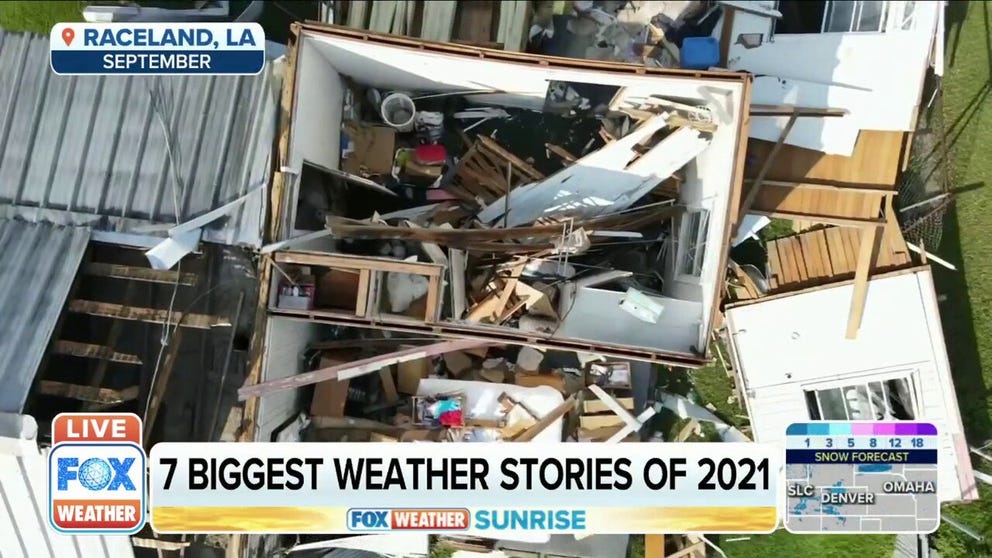7 biggest weather stories of 2021
From heat waves to hurricanes, we saw it all this year
7 biggest weather stories of 2021
This year will be one for the record books as far as the weather goes.
This year will be one for the record books as far as the weather goes.
The extremes for 2021 ran the gambit. It started with a deadly cold snap in the Southern Plains and ended with devastating tornadoes in the Heartland.
Here is a look back at the seven biggest weather stories of the year, in no particular order.
1. Deep freeze in Southern Plains

Icicles form on a bush in downtown Houston, Texas on February 15, 2021.
(MARK FELIX/AFP/AFP via Getty Images)
Arctic air plunged into the Central U.S. in mid-February, producing icy conditions and pushing temperatures down to levels that some places had not seen in a decade.
Texas was among the hardest-hit states by the deep freeze. At one point, the entire state of Texas was under a Winter Storm Warning. The mercury fell into the teens deep into the Lone Star State, and the National Weather Service Office in Houston issued its first-ever Wind Chill Warning.
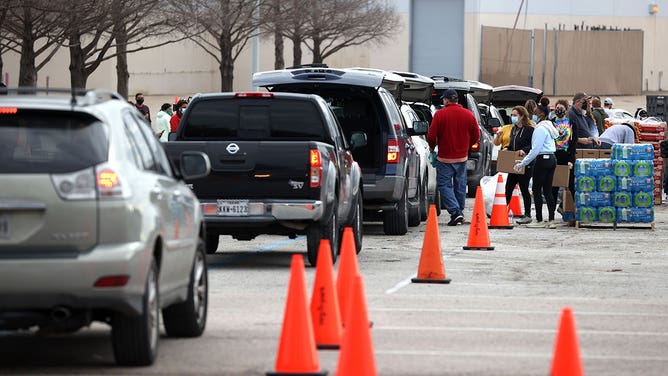
Volunteers load food into cars during the Houston Food Bank food distribution at NRG Stadium on February 21, 2021 in Houston, Texas.
(Justin Sullivan/Getty Images)
The frigid temps caused equipment to freeze at many of the power plants in Texas. The deficit in electricity generation led to blackouts, leaving some people without a way to keep their homes heated for days. Pipes burst across cities and left homes without water for days.
More than 200 people died because of the historic cold.
Read more
- Report: Texas blackouts caused by frozen power generators, gas facilities
- Audit finds Austin was unprepared for February’s winter storm
2. Extreme heat in Pacific Northwest
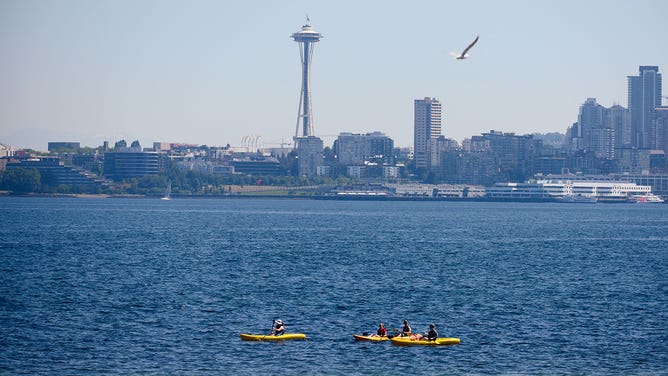
A group canoes in the water off Alki Beach during a heatwave in Seattle, Washington, U.S., on Sunday, June 27, 2021.
(Chona Kasinger/Bloomberg via Getty Images)
Record highs tumbled across the Pacific Northwest amid a four-day heat wave in June.
The average high in Portland, Oregon, during the heat wave was 112 degrees.
Seattle also saw record heat after hitting temperatures over 100 degrees for three days in a row. This in a city that had only hit 100 degrees three times in 126 years. The Emerald City hit 108 during the heat wave, which broke the city’s all-time high temperatures by 5 degrees.
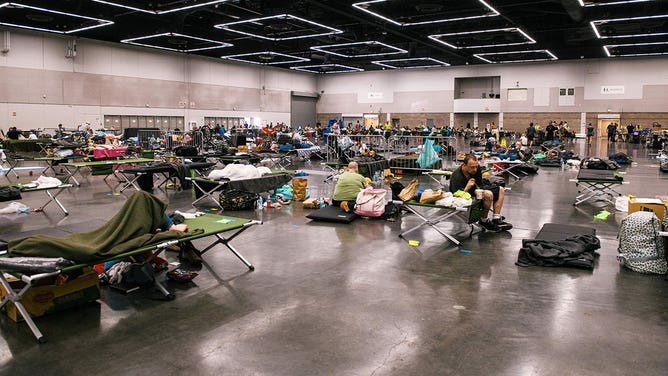
People rest at the Oregon Convention Center cooling station in Oregon, Portland on June 28, 2021, as a heatwave moves over much of the United States.
(KATHRYN ELSESSER/AFP via Getty Images)
The unprecedented heat in a region that does not normally have to deal with it led some roads to buckle, according to a report.
More than 100 people died during the heat wave in Washington state alone, according to FOX 13 Seattle.
Read more
- Summer flip-flop: Seattle ends up with more 100° days than Houston
- The nation’s first heat wave ranking proposed for California
3. Wildfires scorch West
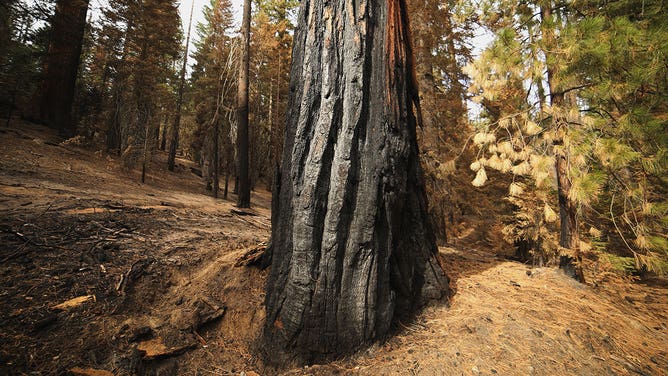
A giant sequoia that has been scarred from the Windy Fire in Sequoia National Forest, California, U.S., on Thursday, Dec. 2, 2021.
(David Swanson/Bloomberg via Getty Images)
More than 58,000 wildfires have been reported across the U.S. this year, consuming more than 7.8 million acres. Some of the largest fires happened in the drought-stricken West – a region that is also home to some of the oldest forests in the U.S.
The KNP Complex fire grabbed national headlines when lightning ignited the two fires that comprised it in September. The fire burned more than 88,000 acres in and around the Sequoia and Kings Canyon national parks, where some of the largest trees in the world reside. The parks had to be closed to visitors for several weeks while firefighters used foil blankets wrapped around the base of these giant trees to save them from the flames.
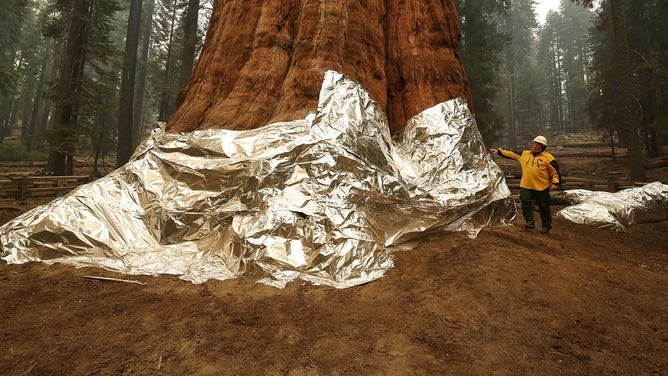
Operations Section Chief, Jon Wallace looks over General Sherman where the historic tree was protected by structure wrap from fires along with the Four Guardsmen at Sequoia National Park, California, September 22, 2021.
(GARY KAZANJIAN/POOL/AFP via Getty Images)
The largest fire of the year by acreage was the Dixie Fire that ignited in July. It consumed more than 960,000 acres northeast of Chico, California.
Read more
- Skies again turn orange in central California as wildfire smoke returns
- World’s largest tree still standing as wildfire rages nearby
- As many as 3,600 giant sequoias killed by 2021 wildfires
4. Henri
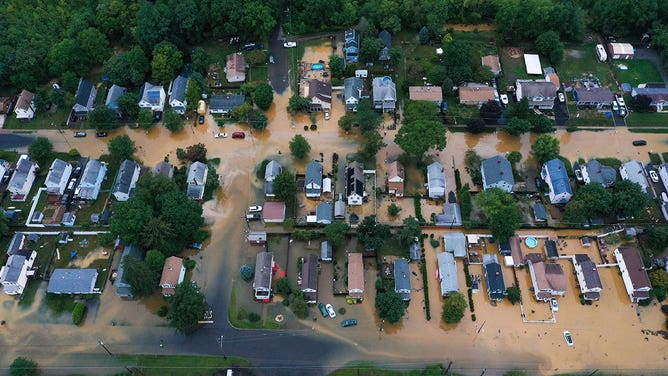
An aerial view of flooded streets are seen in Helmetta of New Jersey, United States on August 22, 2021 as Tropical Storm Henri hit east coast.
(Tayfun Coskun/Anadolu Agency via Getty Images)
About mid-way through this year’s hurricane season, a storm named Henri took aim at New England after meandering around Bermuda for several days.
The storm became a minimal hurricane, but weakened to a strong tropical storm just before making landfall in Rhode Island on Aug. 22. It was the first named storm to make its primary landfall in the state since Hurricane Bob in 1991.
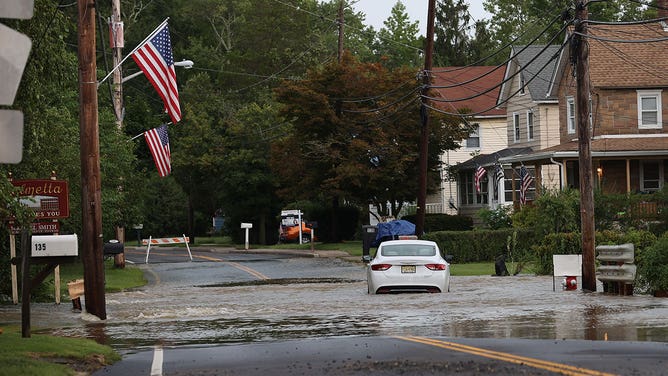
Tropical Storm Henri hit the town of Helmetta in New Jersey, United States on August 22, 2021.
(Tayfun Coskun/Anadolu Agency via Getty Images)
Henri produced flooding from Massachusetts to New Jersey. Between 6 and 8 inches of rain fell in parts of the Northeast in a 38-hour period.
More than 140,000 people lost power at the height of the storm.
Read more
- Tropical Storm Henri's track resembles that of another Henri in 1985
- Here's how much rain Henri has dumped on some New England locales
- Watch: Tropical Storm Henri's weeklong journey across the Atlantic to Rhode Island
5. Ida

A vehicle is seen in September 2021 stuck in mud in left behind by the storm surge of Hurricane Ida a month earlier.
(Robert Ray/FOX Weather)
The most powerful hurricane that made landfall in the U.S. this year was Hurricane Ida.
The Category 4 storm slammed into Louisiana with 150-mph winds on Aug. 29, the 16th anniversary of Hurricane Katrina. It pushed ashore a storm surge of at least 10 feet and left the southeastern Louisiana coast in shambles.
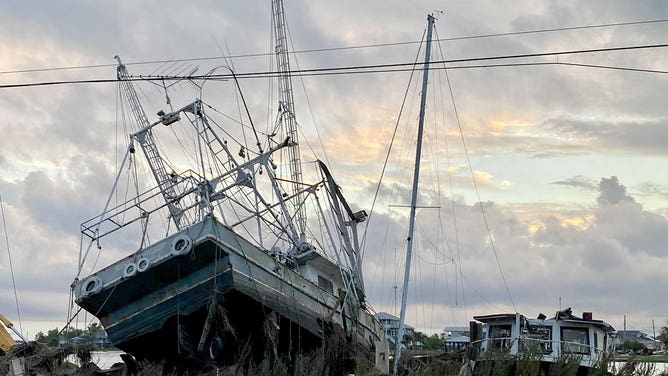
A boat is seen damaged in September 2021 a month after Hurricane Ida swept through coastal Louisiana.
(Robert Ray/FOX Weather)
Ida gained a second life as the storm moved north through the eastern U.S., producing tornadoes and historic flooding as far north as New England. Scenes of streets flooded with feet of water in New York and New Jersey brought back images of Superstorm Sandy in 2012. A major highway in Philadelphia was underwater after the Schuylkill River flooded.
Ida caused more than $64 billion in damage and killed nearly 100 people.
Read more
- ‘It’s like a ghost town’: Louisiana fishing village still reeling after Hurricane Ida
- Beware the 'I' storm: It has more retirees than any other letter used for Atlantic hurricane names
- How Ida's small eye compares to other major hurricanes that have struck the US
6. Deadly flash flood in Tennessee
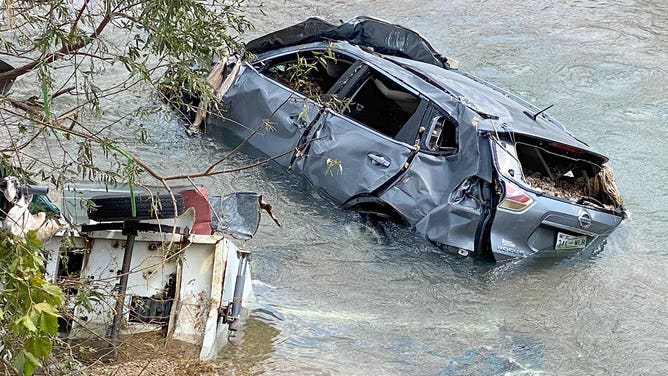
A mangled SUV is seen filled with debris and surrounded by water Aug. 24, 2021, after a flash flood in Waverly, Tennessee.
(Robert Ray/FOX Weather)
A line of strong storms produced a deadly flash flood in Middle Tennessee during the summer.
A little more than 20 inches of rain fell between Waverly and McEwen, about 60 miles west of Nashville, in just a day. The torrential rains sent rushing floodwaters into communities, killing 22 people.
A 20.73-inch rainfall observation at a wastewater treatment plant in McEwen set a new state 24-hour rainfall record, dwarfing the old record that had stood for nearly 40 years.

Cars are seen stacked among the debris Aug. 22, 2021, after a deadly flash flood in Waverly, Tennessee.
(Twitter/GovBillLee)
FOX 17 in Nashville reported that the flood is estimated to have caused $23.9 million in damage.
Read more
- 20-inch rainfall observed during this year's flooding in Tennessee sets state record
- PHOTOS: These images show destruction left behind by Tennessee flash flood
- Here’s how much rain caused Tennessee’s deadly flood
7. Heartland tornadoes
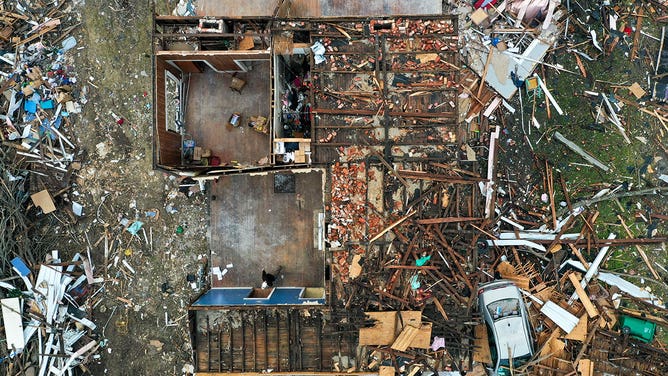
An aerial view of damage caused by tornadoes in Mayfield, Kentucky, United States on December 14, 2021.
(Tayfun Coskun/Anadolu Agency via Getty Images)
The year ended with one of the most active Decembers on record as far as severe weather goes.
Unusually warm air dominated much of the southern U.S. throughout the month, which helped set the stage for several rounds of terrible thunderstorms and terrifying tornadoes.
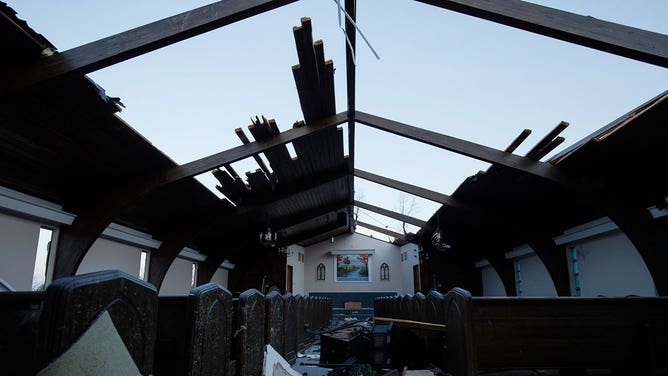
Interior view of tornado damage to Emmanuel Baptist Church on December 11, 2021 in Mayfield, Kentucky. Multiple tornadoes tore through parts of the lower Midwest late on Friday night, leaving a large path of destruction.
(Brett Carlsen/Getty Images)
The worst outbreak of the month happened on Dec. 10, when a supercell tracked from Arkansas to Kentucky and produced tornadoes along the way. The strongest tornado along that track happened in Mayfield, Kentucky, where an EF-4 tornado leveled much of the town.
Nearly 80 people were killed in Kentucky alone during the tornado outbreak.
Read more
